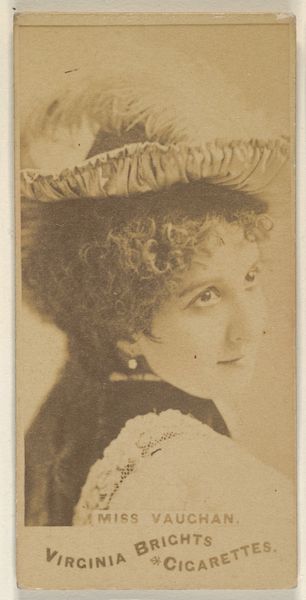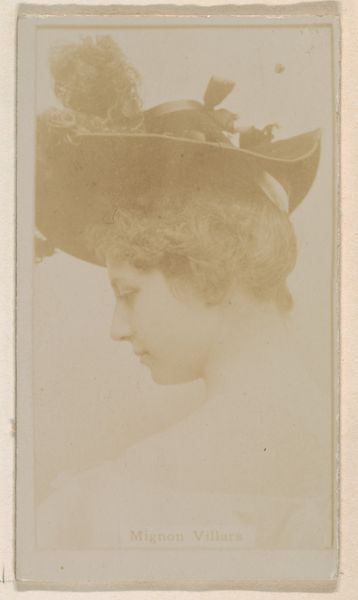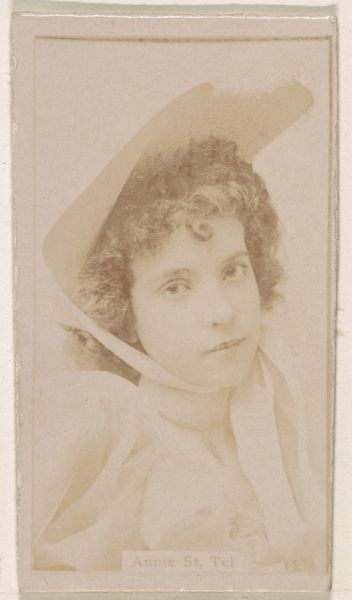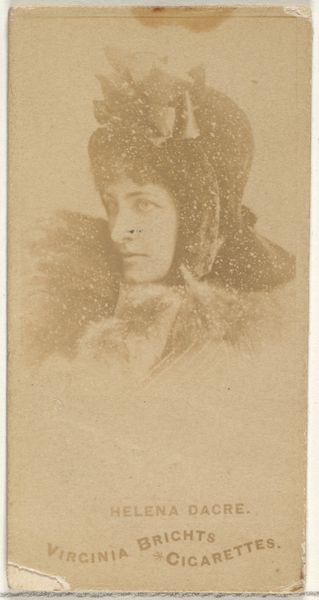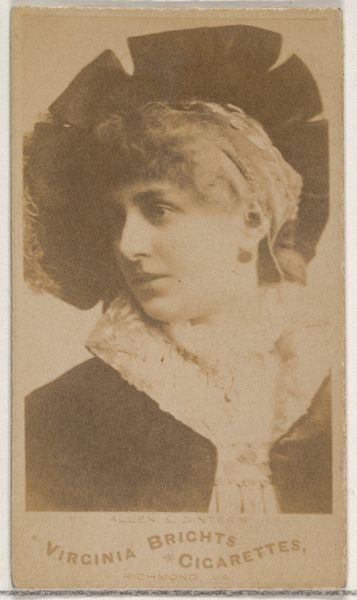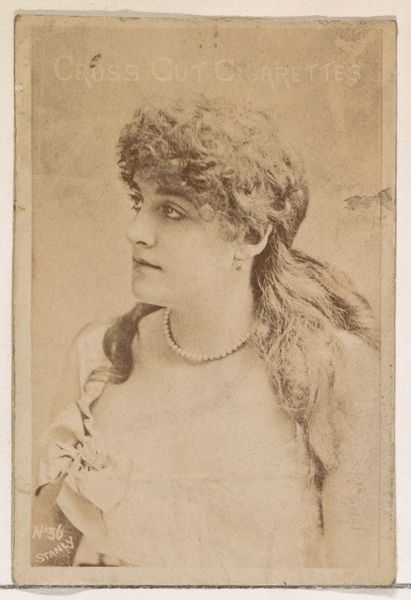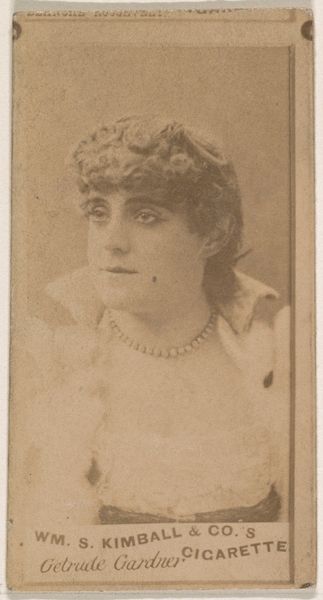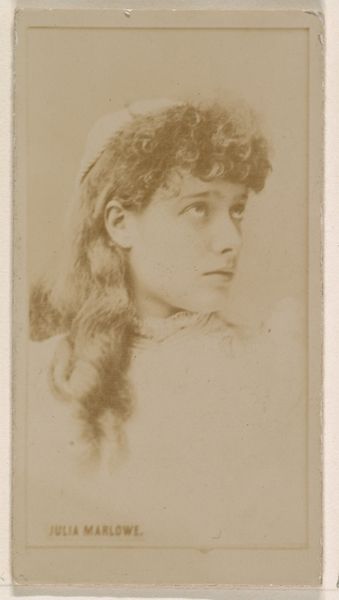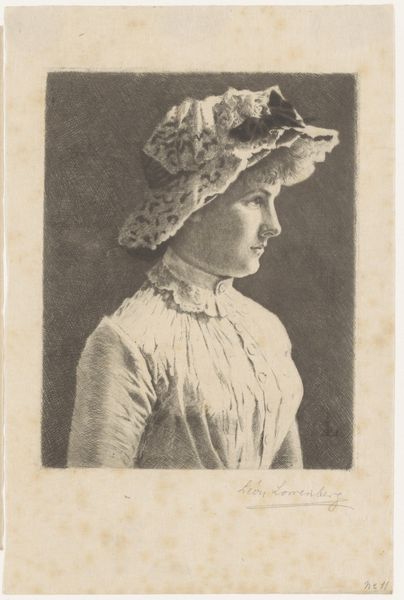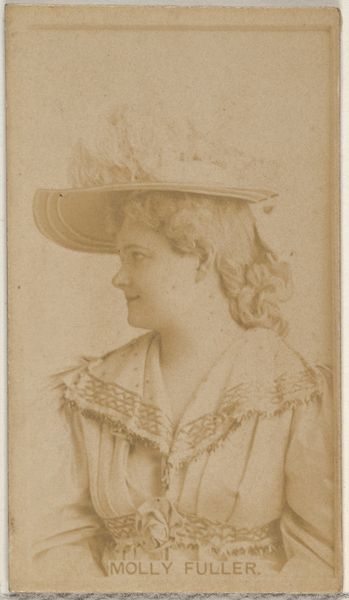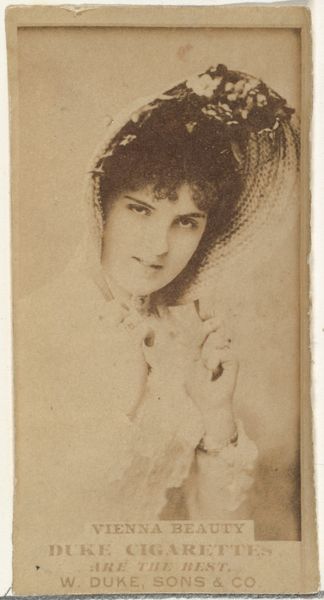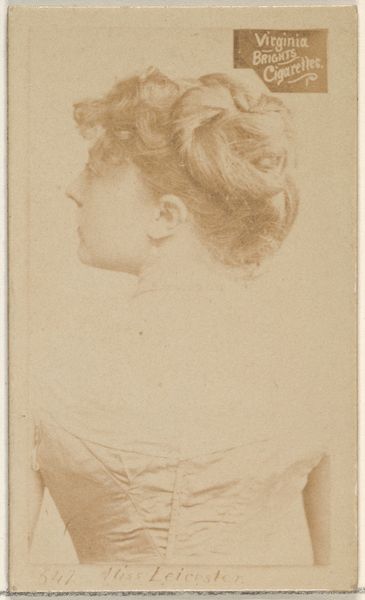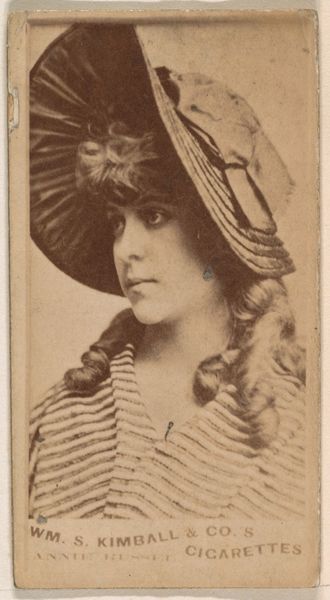
Fotoreproductie van een geschilderd portret van een Roma jongen met hoed naar Adriano Bonifazi 1875
0:00
0:00
photography
#
portrait
#
photography
#
portrait reference
#
portrait drawing
#
tonal art
#
realism
Dimensions: height 116 mm, width 97 mm, height 320 mm, width 265 mm
Copyright: Rijks Museum: Open Domain
Curator: I'm immediately drawn to the sepia tones; there's a kind of austere beauty. Editor: Indeed. What we're viewing is a photographic reproduction dating back to 1875. The original painting is attributed to Adriano Bonifazi, and the photo depicts a young Roma boy in a rather dashing hat. It resides here at the Rijksmuseum. Curator: It's interesting to consider how a photograph mediates the painted image, further distancing the subject. Who was this child, and what was his lived reality? There's a risk of exoticizing the Roma identity here, rendering the subject a romanticized 'other.' Editor: Absolutely, and considering the photographic process, we must account for labor, for studio practice, for the economics surrounding art production and reproduction in that era. The materiality speaks to that. This image itself is evidence of that process and its product. Curator: Right, and in a world that largely marginalized and discriminated against Roma communities, how might we interpret Bonifazi’s original portrait? Was it meant as a sympathetic portrayal or simply as a genre study? What biases are present and reflected, even inadvertently, through the technical materials and process? Editor: The texture captured by the photography offers another layer of analysis: the paper stock, the light capturing the pigments and canvas texture of the original, all informing our present encounter. It speaks to how cultural capital operates and can become abstracted from material circumstance. Curator: And how the circulation of images further complicates our relationship to historical trauma and inequality. We have to ask ourselves, "What purpose does viewing this serve now?" Editor: It's a photograph reproducing an earlier form. Every step involved required resources, and labour. It reflects not only art's creative elements but the mechanisms and values in the cultural system itself. Curator: A haunting visual echo, capturing an ephemeral moment, mediated further by the lenses of both photography and painting, demanding our awareness. Editor: It shows how objects become a type of artifact. What was copied now bears value itself. And, therefore, history and art become interconnected at a critical level of inquiry.
Comments
No comments
Be the first to comment and join the conversation on the ultimate creative platform.
